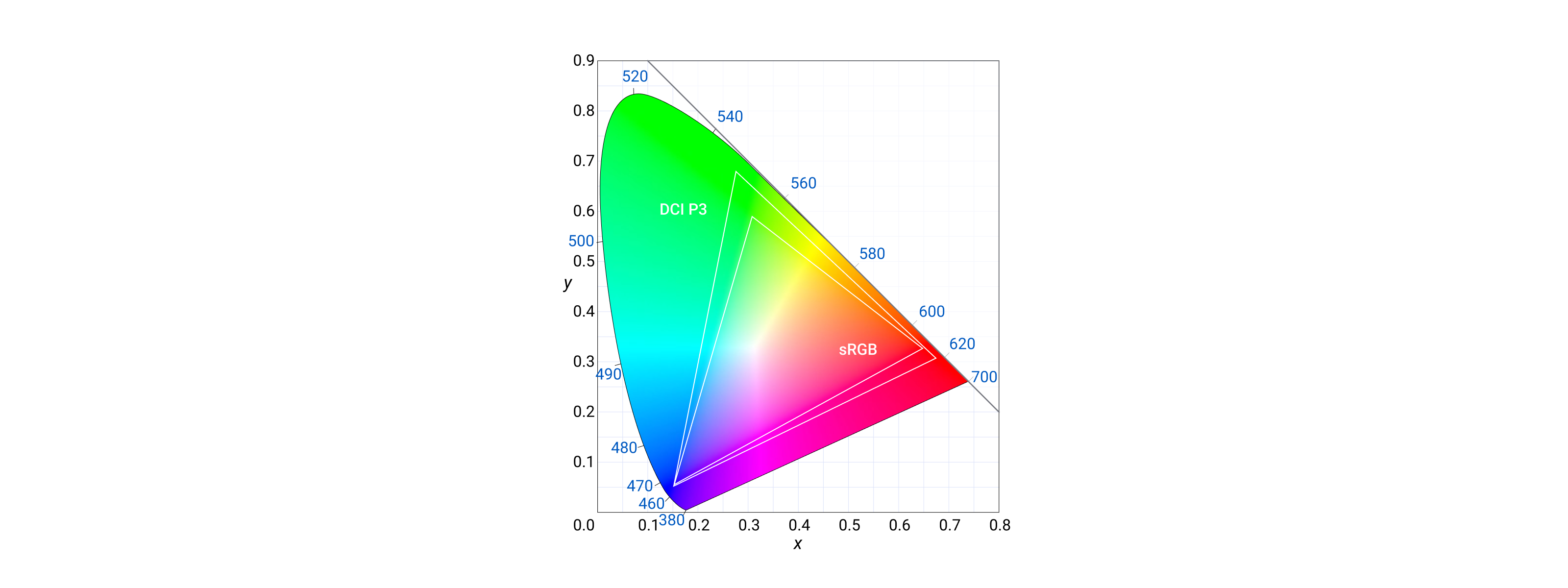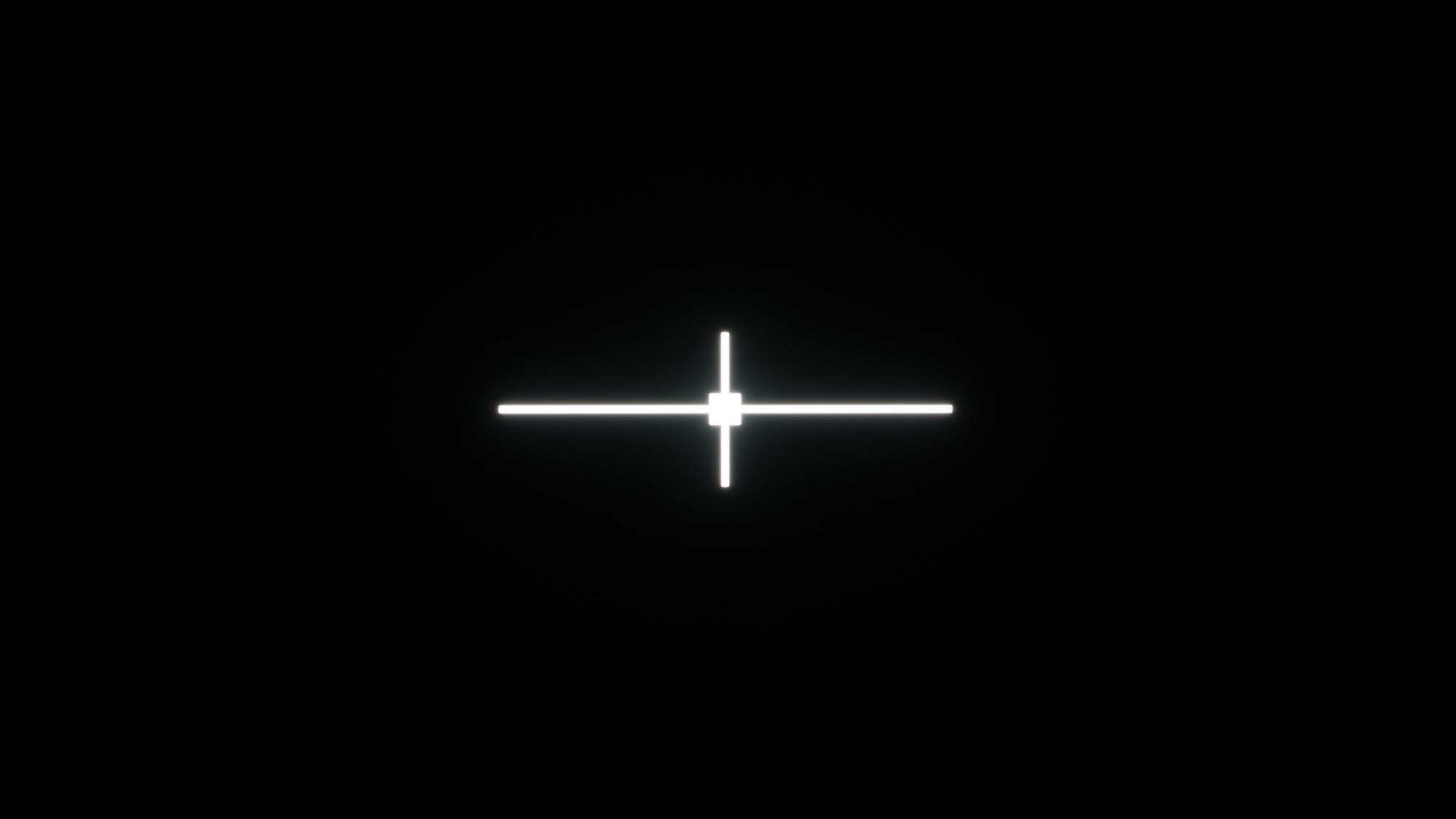TV 디자인의 색상은 영감을 주고 분위기를 조성하며 사용자가 결정을 내리도록 유도할 수도 있습니다. 사용자가 가장 먼저 인지하는 강력하고 유형적인 요소입니다. 폭넓은 시청자와 소통할 수 있는 다양한 방법인 만큼 색상이 고품질 TV 인터페이스를 만드는 데 있어 중요한 단계라는 것은 당연한 일입니다.
하이라이트
- '표준' 화면 모드는 가장 일반적인 TV 디스플레이 설정입니다.
- 대부분의 TV는 sRGB를 지원합니다.
- 색상을 선택할 때는 사용자가 어두운 곳에서 다양한 거리와 TV를 시청한다는 점을 고려해야 합니다.
- TV의 디스플레이 기술과 색공간 설정은 매우 다양할 수 있습니다.
- 가능한 한 많은 기기와 색상 공간 변형으로 테스트해야 합니다.
- 색상을 사용할 때는 다양한 사용자 요구와 선호도를 고려합니다.
- 경사를 사용할 때는 밴딩과 같은 일반적인 TV 문제에 주의를 기울입니다.
TV 색상 및 TV 디스플레이
모든 디스플레이가 모든 색상을 동일한 방식으로 표시한다고 오해하는 경우가 많습니다. 업무용 노트북을 사용하거나 친구의 영화를 볼 때 본 적이 있을 것입니다. 동일한 색상이 TV 모델, 컴퓨터 모니터, 휴대기기에 따라 다를 수 있습니다.
색상 공간

색상 공간은 TV 디스플레이에서 재현할 수 있는 색상 스펙트럼을 나타냅니다. 여기에는 sRGB 및 DCI-P3 색공간이 포함됩니다. sRGB는 가장 널리 사용되는 색공간이며 최대 범위의 TV 모델과 호환됩니다. 운영체제, TV 프로그램, 게임에서 사용됩니다.
DCI-P3 색공간을 선택하면 동영상을 더욱 선명하고 생동감 있게 표현할 수 있습니다. DCI-P3으로 만든 콘텐츠는 더 많은 색상에 액세스할 수 있으므로 콘텐츠는 고급 TV 디스플레이와만 호환될 수 있습니다.
화면 모드
사진 모드는 TV가 이미지를 처리하는 방식을 변경하여 TV의 색상 품질에 영향을 줄 수 있습니다. 예를 들어 표준 사진 모드는 일반적으로 더 정확한 색상 표현을 생성하려고 하는 반면 선명한 사진 모드는 색상의 채도를 높여 더 선명하게 만듭니다.
대부분의 TV 패널의 기본 화면 모드는 표준입니다. 이 모드는 정확한 색상과 균형 있는 영상을 제공하도록 설계되었습니다. 하지만 사용자는 선택할 수 있는 옵션이 많습니다 많은 사용자가 인지된 화질을 개선하기 위해 사진 모드를 변경합니다.
7가지 일반 화면 모드를 살펴보겠습니다.
- 표준: 기본 사진 모드입니다. 정확한 색상과 균형 잡힌 영상을 제공합니다.
- 선명하게: 색상의 채도를 높여 더 선명하게 만듭니다.
- 동적: 이미지의 대비를 높여 더 선명하게 표시합니다.
- 게임: 게임에 맞게 게임 화면을 최적화하여 입력 지연을 줄입니다.
- 영화: 영화 시청에 맞게 영상을 최적화하여 모션 블러를 줄입니다.
- 스포츠: 스포츠를 시청할 수 있도록 영상을 최적화하여 이미지의 밝기를 높입니다.
- 맞춤설정: 사용자가 원하는 대로 사진 설정을 조정할 수 있습니다.
대비
대비는 특히 최신 HDR 디스플레이에서 화질의 가장 중요한 측면 중 하나입니다. TV가 생성할 수 있는 가장 어두운 검은색과 가장 밝은 흰색의 차이입니다. 명암비가 높을수록 일반적으로 검은색이 깊어지므로 전반적인 화질이 크게 달라집니다.

대비: 562:1 (낮음)
|

대비: Inf: 1 (완벽)
|
다른 TV에서 같은 색상이 사용된 경우 낮은 대비율로 TV에서 색이 바랜 것처럼 보일 수 있습니다. 우수한 사용자 환경을 보장하기 위해 디자이너는 TV 애플리케이션용 UI를 만들 때 다음 팁을 고려해야 합니다.
- 텍스트와 배경 색상 간에 고대비를 사용합니다.
- 크기와 줄 간격이 더 큰 명확하고 읽기 쉬운 글꼴을 선택합니다.
- 접근성 기능을 통합합니다.
- 색상에만 의존하여 정보를 전달하지 마세요.
- 다양한 색 공간 (SDR 및 HDR)에 맞게 최적화합니다.
- 다양한 조명 환경에서 가독성을 테스트합니다.
디스플레이 기술
디스플레이 기술도 화면에 표시되는 색상에 영향을 줄 수 있습니다. 일반적인 유형은 다음과 같습니다.
- LCD: 액정 디스플레이는 가장 일반적인 유형의 TV 디스플레이입니다. 또한 백라이트를 사용하여 액체 패널을 밝힌 다음 빛이 통과하는 것을 차단하거나 허용하여 이미지를 생성합니다. LCD TV는 상대적으로 저렴하고 다양한 크기로 제공되지만 대비가 낮고 색상 재현이 어려울 수 있습니다.
- LED: 발광 다이오드 디스플레이는 LED를 백라이트로 사용하는 새로운 유형의 LCD TV입니다. LED는 기존 LCD보다 에너지 효율적이며 더 밝고 생생한 이미지를 만들 수 있습니다. LED TV는 LCD TV보다 더 비싼 경향이 있습니다.
- QLED: 퀀텀닷 발광 다이오드 디스플레이는 퀀텀닷을 사용해 빛을 생성하는 일종의 LED 디스플레이입니다. 양자점은 기존 LED보다 더 넓은 범위의 색상을 생산할 수 있는 작은 입자입니다.
- OLED: 유기 발광 다이오드 디스플레이는 유기 물질을 사용하여 빛을 생성하는 일종의 LED 디스플레이입니다. OLED TV는 가장 비싼 TV 유형이지만 모든 유형의 TV 중에서 최고의 대비와 색상 재현을 제공합니다.
각 유형의 TV 디스플레이 기술에는 색상을 렌더링할 때 고유한 장단점이 있습니다.
자세히 알아보려면 The Sleep Mo Guys의 How a TV Works in 슬로 모션을 시청하세요.
원칙
자세한 내용은 머티리얼 색상 원칙을 참고하세요.
- 접근성 우선: TV 인터페이스는 대상이 다양합니다. 젊은이부터 고령자까지 시각장애인까지 다양하게 있죠 색상을 사용할 때는 항상 요구사항과 선호도를 고려하세요. UI에서 접근성을 가장 우선시하면 사용자에게 효율적인 환경을 제공할 수 있습니다. 한 가지 예는 색상 대비 표준 준수입니다. 참고: 여러 TV 모델에서의 색상 렌더링 변형을 항상 고려하세요.
- 목적에 따른 색상 지정: 색상을 올바르게 사용하면 의사소통을 개선하고 의미 있고 몰입도 높은 환경을 만들 수 있습니다. TV 인터페이스 전체의 제품 ID를 반영합니다.
- 대비되는 기반 선택: 대비되는 배경을 사용하면 사용자가 앱의 텍스트 및 다양한 요소를 해석하고 상호작용할 수 있습니다. 대비가 높을수록 콘텐츠가 잘 보입니다.
화면 밴딩

TV의 화면 밴딩이란 실제 표시되는 콘텐츠의 일부가 아닌 가로 또는 세로선, 띠 또는 그라데이션이 디스플레이에 보이는지 의미합니다. 이 아티팩트는 뚜렷한 선 또는 화면상의 색상이나 음영의 점진적인 전환으로 나타날 수 있습니다. 밴딩은 낮은 색심도, 압축 아티팩트, 신호 간섭, 패널 또는 GPU 문제와 같은 요인으로 인해 발생할 수 있습니다.
TV용 사용자 인터페이스를 디자인할 때, 특히 그라데이션 및 밴딩 방지와 관련하여 다음 팁을 고려하세요.
- 고색심도 그래디언트 사용: 밴딩 위험을 최소화하려면 색심도가 높은 그래디언트 (예: 10비트 이상). 이렇게 하면 색상 간의 전환이 더 부드러워지고 가시 밴딩이 나타날 가능성이 줄어듭니다.
- 극단적인 색상 전환 피하기: 그라데이션을 만들 때는 밴딩이 발생하기 쉬운 색상 간의 선명한 전환을 피하세요. 대신 화면에 더 부드럽게 표시되도록 하는 좀 더 섬세하고 점진적인 색상 전환을 사용하세요.
- 여러 기기에서 테스트: TV는 색심도와 패널 품질이 다를 수 있으므로 여러 기기에서 UI 디자인을 테스트하여 그라데이션이 여러 화면에서 부드럽고 밴딩 없이 표시되는지 확인하는 것이 중요합니다.
- 디더링 기법 사용: 디더링은 패턴이 있는 노이즈와 같은 방식으로 색상을 혼합하여 밴딩을 줄이는 데 도움이 되는 기법입니다. 이렇게 하면 색심도가 낮은 화면에서도 더 부드러운 색상 전환이 이루어지는 것처럼 보이게 할 수 있습니다.
- 단색 또는 은은한 패턴 선택: 그라데이션이 디자인에 필수적이지 않은 경우 단색이나 은은한 패턴을 대신 사용해 보세요. 이는 밴딩 가능성이 낮지만 미적으로 보기 좋은 UI를 만들 수 있습니다.

